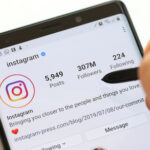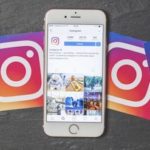
If you’ve been paying attention to social media chats, you may have noticed a lot of language or acronyms that took you a while to figure out. What does NFS mean on Instagram? OR WHAT do TFW, TBH, and LMK are social media acronyms that are casually thrown around in comments, captions, and conversations between people mean?
If you’re in charge of developing social media material or replying to customers, it’s critical that you grasp the most frequent social media acronyms and terminology. This will assist you in understanding what your audience is saying and how to communicate in their language. To keep up with the latest online terminology, consult this list of social media acronyms and prevalent internet slang.
Internet Slang and Acronyms Used in Conversation
Most social media acronyms are more casual and conversational than business-related. Many of them have been around for years on the internet, while others are newer. These acronyms are frequently used in public posts made or shared by your followers, as well as in their comments on your posts.
It’s important to understand what these social media abbreviations mean so you can understand what your audience is saying and respond appropriately if necessary. Some of these abbreviations are also used as hashtags, which you can use to increase your visibility.
- AFAIK – As far as I know
- AMA – Ask me anything. Celebrities, influencers, industry experts, and regular social media users frequently use this as an open invitation to ask questions.
- BRB – Be right back
- BTAIM – Be that as it may
- BTS – Behind the scenes. When you want to give your followers a behind-the-scenes look at what your brand is up to, use this social media acronym.
- BTW – By the way
- DAE – Does anyone else…?
- DYK – Did you know…?
- ELI5 – Explain like I’m five. When people are looking for the simplest answer to more difficult topics, platforms like Reddit are frequently used.
- FBF – Flashback Friday. A theme in which users exchange old photos or posts with their followers.
- FBO – Facebook official. When you make a public Facebook announcement about a live event, such as a new relationship, a job change, etc.
- FF – Follow Friday. A Twitter trend that involves giving a shoutout to people who you believe deserve more recognition and followers.
- FOMO – Fear of missing out. This frequently increases people’s motivation to keep up with social media in general, and it is also frequently used for marketing purposes, such as limited bargains, exclusive product reveals, and other strategies.
- FTFY – Fixed that for you
- FTW – For the win
- FYI – For your information
- G2G or GTG – Got to go
- GG – Good game
- GTR – Got to run
- HBD – Happy birthday
- HIFW – How I feel when…
- HMB – Hit me back
- HMU – Hit me up
- HT or H/T – Hat tip. Used to recognize, appreciate, or thank other users.
- HTH – Here to help or happy to help
- ICYMI – In case you missed it. Typically used when sharing out-of-date content.
- IDC – I don’t care
- IDK – I don’t know
- IKR – I know, right?
- ILY – I love you
- IMHO – In my humble opinion
- IMO – In my opinion
- IRL – In real life
- JK – Just kidding. Used to convey a lighthearted mood.
- LMAO – Laughing my a** off
- LMK – Let me know
- LMS – Like my status. Used to encourage others to interact with a post.
- LOL – Laughing out loud
- MFW – My face when…
- MTFBWY – May the Force be with you. A “Star Wars” reference that is widely used to encourage.
- NBD – No big deal
- NM – Not much
- NSFW – Not safe for work
- NVM – Never mind
- OH – Used as context for quotes
- OMW – On my way
- OOTD – Outfit of the day
- OP – Original poster
- OTP – One true pairing. Fandoms frequently use this term. Refers to two persons or fictitious characters whom you perceive to be the ideal couple/pair.
- PPL – People
- ROFL – Rolling on the floor laughing
- ROFLMAO – Rolling on the floor laughing my a** off
- SFW – Safe for work
- SMH – Shaking my head. To express surprise or disappointment.
- TBH – To be honest
- TBBH – To be brutally honest
- TBT – Throwback Thursday. This, like FBF, entails sharing old photographs or posts.
- TFW – That feeling when… Used to share a personal experience.
- TGIF – Thank God it’s Friday
- TIL – Today I learned…
- TL;DR – Too long; didn’t read. Here’s an example of Slack using this acronym, as well as some of the others we discussed earlier. This may appear to be overkill, but in the case of Slack, it suits the brand identity and demonstrates an attempt to convey the idea simply and humorously.
- TMI – Too much information
- WBU – What about you?
- WBW – Way back Wednesday.
- WFH – Work from home
- YOLO – You only live once
- NFS – Not for sharing.
Social Media Slang
While social media acronyms are extremely useful for anyone dealing with social media, understanding internet slang is also essential. Every day, social media users invent new slang and abbreviations. Understanding the most commonly used social media jargon will help you better understand your audience.
- ¯\_(ツ)_/¯ – The shrug expression conveys indifference. It’s often used instead of “whatever,” “doesn’t matter,” “who knows,” or “why not.”
- Clickbait – The practice of using a provocative title just to drive clicks.
- Crush it – When someone is excelling at something, they are crushing it.
- Facepalm – When someone does or says something ridiculously foolish.
- Fam is an abbreviation for family. A person or group of persons you believe to be family.
- I Can’t Even – Expresses the speaker’s incapacity to express emotion because they are either delighted or frustrated.
- It Me – When someone can identify with something, usually a quotation or meme. Evernote cleverly exploits it in the following tweet, where it shares the tool’s key features and adds the caption “it me.”
- Lit – Used to describe what is “happening.”
- On Fleek – On Target
- Slay – Similar to “crushing it,” you “slay” something when you accomplish it exceedingly effectively.
- Slide Into Someone’s DMs – The technique of sending a DM to someone at random.
- Squad Goals – A phrase used to express something you want your team to become or attain.
- Thirsty – When someone is overly eager or appears desperate.
- Shade – The act of publicly criticizing or disparaging someone. Often used to refer to sarcastic remarks directed toward someone or something.
- Yaas is an especially enthusiastic version of “yes.” You can use as many A’s as you want.
Best Practices for Utilizing Slang and Acronyms on Social Media
Although knowing these social media acronyms and internet slang is important, it doesn’t mean you should use them in all of your social media postings. Here are some best practices for using them correctly:
Keep Your Brand Voice Consistent
No matter how well you know and comprehend social media terminology, you should only utilize it if it actually fits your company’s voice. Some of the more technical and business-specific acronyms would be required for B2B organizations and businesses seeking to maintain a professional voice. However, calling their adherents “fam” or their gatherings “light” would look entirely out of place.
Canva, for example, maintains a casual brand voice but does not make an effort to incorporate current social media abbreviations and terminology. It still maintains a casual tone when addressing social media followers, but it doesn’t shove trending social media jargon where it doesn’t belong.
Understand When To Use Appropriate Lingo or Acronyms
Even when a company has a more informal brand voice, using casual social media language is not always a good option. You must carefully examine the issue and know when to apply the appropriate acronym. A consumer who comes to you with a complaint, for example, may not enjoy it if you encourage them to “hit you up.” Instead, you may introduce yourself as “hth.”
Don’t Overdo It
Trying too hard to stay relevant and becoming a laughingstock is one of the worst things a company can do. This excellent practice complements the first two suggestions. If it doesn’t fit your brand voice or the situation, try not to force it. Even if you don’t use a lot of slang, recognizing these popular social media acronyms will help you better understand your audience and their responses.
Understand the Jargon Used by Your Target Audience
Most significantly, with social listening, you may learn exactly what kind of internet slang your audience is using. Use Sprout Social’s social listening feature to listen in on your audience’s conversations. This is an excellent method for identifying common terms and acronyms in their articles so that you can grasp their lingo.
How frequently do you use abbreviations and slang in your posts? Before you start throwing slang around, make sure you understand your target audience: use our worksheet for developing and improving connections with your audience to generate better content.
- How To Choose Colorful Clothes for Your Baby - February 24, 2023
- 82 Most Significant Social Media Acronyms and Slang Terms You Should Know - December 6, 2022
- 7 Tips for Avoiding Injuries While Exercising - October 17, 2022






